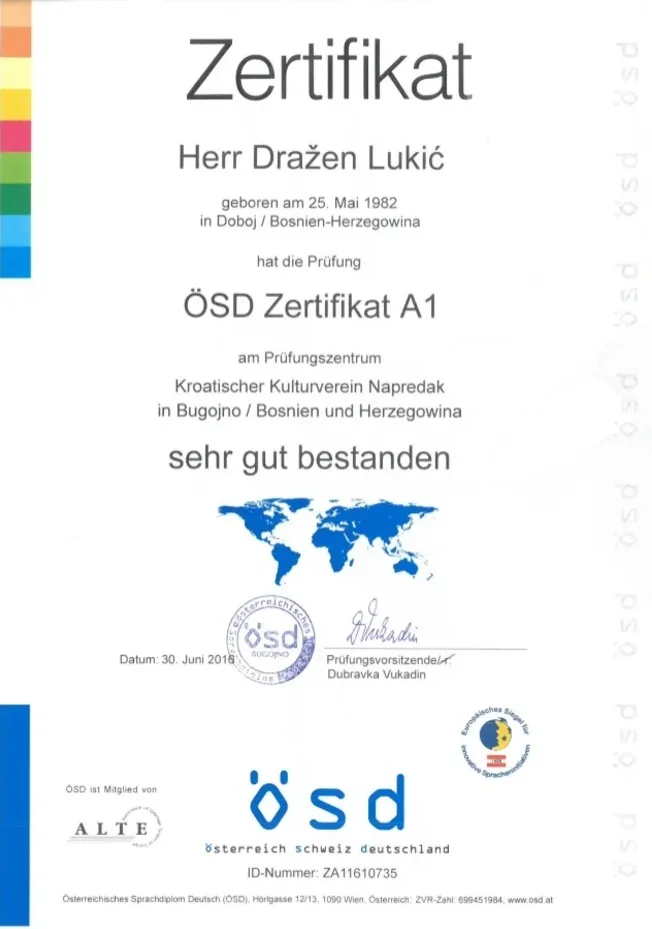Understanding the German as a Foreign Language Exam
Learning a brand-new language opens doors to many chances, both individual and expert. Amongst the myriad of languages spoken globally, German stick out as a vital language, particularly in the context of Europe. With over 90 million native speakers and thriving economies in Germany, Austria, and Switzerland, proficiency in German can offer significant benefits. For non-native speakers aiming to verify their German language skills, the German as a Foreign Language exam acts as an important credential.
Introduction of the German as a Foreign Language Exam
The German as a Foreign Language exam, frequently described as TestDaF (Test Deutsch als Fremdsprache), is a globally acknowledged proficiency test created for non-native speakers. It assesses individuals' reading, writing, listening, and speaking abilities in German. The assessment is a crucial stepping stone for those looking for to study or operate in German-speaking countries, as it helps in determining the candidate's ability to use German in scholastic, expert, and everyday contexts.
Who Can Take the Exam?
While anybody can take the TestDaF no matter age, it is mostly targeted at:
Students wishing to get universities in Germany or other German-speaking countries.

Experts wanting to improve their career potential customers in German-speaking areas.
Immigrants looking for citizenship or irreversible residency in Germany, Austria, or Switzerland.
Levels of Proficiency
The TestDaF examines prospects across 4 essential elements which line up with the Common European Framework of Reference for Languages (CEFR). It is segmented into the list below levels:
TDN 3: Intermediate level, ideal for the majority of university courses.
TDN 4: Upper intermediate level, frequently needed for academic programs that require strong language abilities.
TDN 5: Advanced level, anticipated for highly specialized research studies or professional work in German-speaking environments.
Exam Structure
The structure of the TestDaF consists of four sub-tests, which collectively take roughly 3.5 hours to complete. Here's what candidates can anticipate:
Listening Comprehension (40 minutes):.
Audio recordings associated with daily circumstances and academic situations.
Prospects address questions based on the material.
Checking Out Comprehension (60 minutes):.
Texts from numerous fields like literature, social sciences, and lives sciences.
Concerns evaluate understanding of the main point and detailed info.
Written Expression (60 minutes):.
ösd materialien composing job, often including the analysis of a given subject or text.
Prospects must demonstrate clearness, coherence, and suitable style.
Spoken Expression (30 minutes):.
An interactive speaking test carried out with an inspector.
Prospects are examined on their ability to engage in discussions, provide presentations, and react to questions.
Preparing for the TestDaF.
Preparation for the TestDaF is crucial, as it offers prospects the best possibility to be successful. Here are some methods and resources to think about:.
Research Study Various Resources.
Language Courses: Enroll in extensive German language courses tailored for TestDaF preparation.
Online Resources: Utilize platforms like Duolingo, Babbel, or Goethe Institute's online offerings.
TestDaF-specific products: Acquire practice tests from the TestDaF official website or language bookstores.
Practice Regularly.
Speaking: Engage in discussion clubs or partner with language exchange partners.
Writing: Practice composing essays and letters in German, looking for feedback from native speakers or instructors.
Listening and Reading: Immerse yourself in German media by seeing movies, listening to podcasts, and checking out papers.
Mock Exams.
Taking mock exams under timed conditions can help familiarize candidates with the test structure and enhance time management abilities. Organizations often offer practice tests to assist trainees in assessing their readiness.
Significance of the Exam.
The significance of the TestDaF extends beyond mere scholastic recognition. Here are a number of reasons taking this exam is rewarding:.
University Admissions: Many German universities need a particular TestDaF rating for admission to programs taught in German.
Profession Opportunities: Proficiency throughout the four language abilities can enhance employability in international companies or organizations in German-speaking regions.
Cultural Engagement: Mastery of the language makes it possible for deeper connections with German culture, literature, and history.
Immigration: Proficiency in German may be necessary for residency authorizations or long-term residency applications.
Frequently asked questions.
What rating do I need to pass the TestDaF?
There is no universal pass mark; it differs by institution. Usually, a score of TDN 4 agrees with for university admissions.
How frequently can I take the TestDaF?
You can take the TestDaF several times. Nevertheless, it is perfect to permit adequate time for improvement in your language abilities before reattempting the test.
For how long are the results valid?
TestDaF outcomes are usually valid for two years. It is suggested to inspect the particular requirements of the institution or company you are applying to.
Where can I take the TestDaF?
The assessment is available at various screening centers worldwide. The official TestDaF site provides a locator tool for finding nearby testing centers.
Exists a particular age limit for taking the TestDaF?
There is no age limit for taking the TestDaF. Whether a teenager or an adult, anybody interested in proving their German language skills can register for the exam.
Conclusion.
The German as a Foreign Language exam is an important part for anybody wanting to study, work, or immerse themselves in German-speaking societies. With devoted preparation and the best resources, candidates can browse the exam efficiently and showcase their proficiency in the German language, opening various opportunities in education and career paths. Accepting the difficulty of finding out German not just causes academic or professional improvements but likewise improves individual perspectives through the understanding of a new culture.
